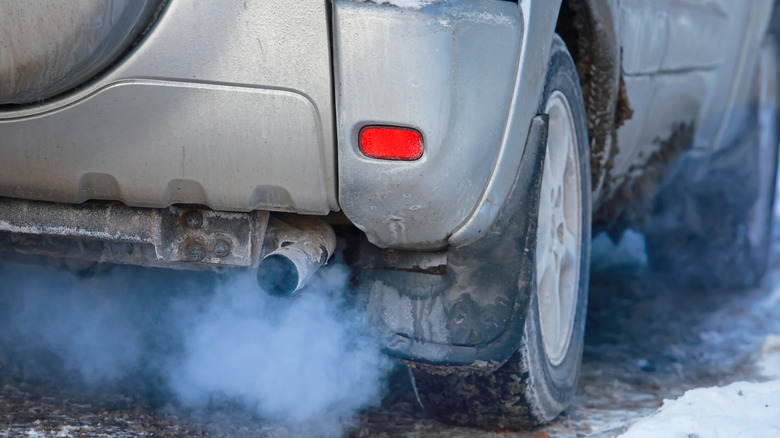Fact Or Myth: Should You Warm Up Your Car Before Driving In The Cold?
We do a lot of things before heading outdoors on a cold winter morning — grabbing a cup of coffee, layering properly, and if you're commuting by car, you may let the engine idle for a few minutes to warm up your car before driving. After all, few of us like driving in a cold car, and some cars have remote starters that make heating them up easy to do. You may even believe warming up your car before hitting the road is a good thing.
The practice is deeply ingrained in car culture, and before the mid-90s, drivers were advised to do exactly that to get the right air-to-fuel mix in the engine, enhance performance, and prolong engine life. That's because most older cars used a carburetor, and needed to be warmed up to prevent engine stalling.
However, things have changed significantly in the past 30 years, and today's fuel-injected engines have solved this problem. In fact, warming up your car could damage your engine.
To warm up, or not to warm up
The bottom line is that it's a myth that you should warm up any modern car before driving in the cold. Oil is essential for lubricating the engines of gas-powered cars. When you start your vehicle, it takes the oil pump about 20-30 seconds to fully lubricate the engine.
While the engine may not be completely warm within this time frame, it is ready to drive. However, if you let your engine idle for several minutes, the oil will drain away from its key components, which could increase friction and cause wear and tear. As a result, many car manufacturers recommend starting the car, buckling in, and driving off almost immediately.
When it's really cold outside, you may be tempted to leave your engine idling for 10 minutes or more to warm up the interior and defrost the windows. While you should never put your safety or that of your passengers at risk by trying to peek out of a windshield covered in frost or ice, you should also keep in mind that driving is the quickest and most efficient way to heat your engine.
A good wintertime routine is to start your engine, get out of your car to remove any ice or snow, give your defroster enough time to start blowing warm air, and get on the road as soon as possible.
EVs and cold weather are a different story
While gas cars still dominate our roads, electric vehicles (EVs) and plug-in hybrid vehicles (PHEVs) are becoming more common as people seek to reduce their carbon footprint and embrace cleaner, more sustainable transportation. Although warming up your gas car for several minutes before driving is not the best idea, when it comes to EVs, warming up your vehicle before setting out on the road — and while it's still plugged into the charging station — is advisable.
EVs and PHEVs operate differently from gas and diesel cars in cold weather, relying on electricity to heat your car's cabin, which consumes a lot of power and leaves you with less driving range. A study by AAA found that EVs can lose about 40% of their range when the temperature drops from 75 degrees to 20 degrees Fahrenheit. Warming up your EV while it's still plugged into the power grid conserves battery life and helps maintain optimal battery temperature and efficiency.


